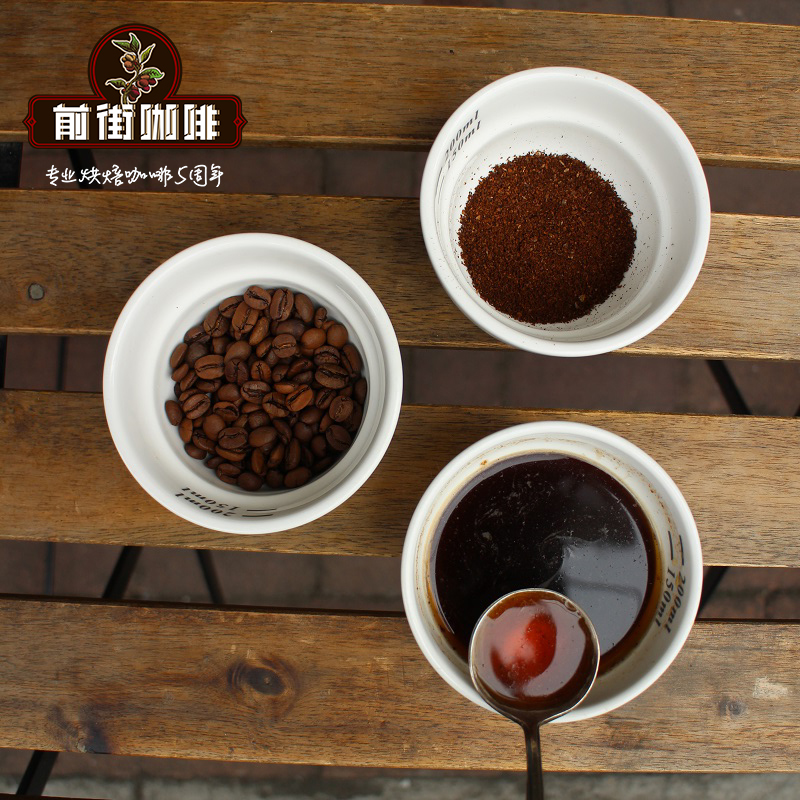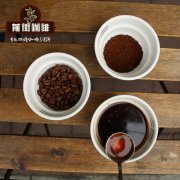How is the development of coffee bean economy in East Timor? What is the flavor and taste of East Timor Timo Coffee?

Professional coffee knowledge exchange more coffee bean information please follow the coffee workshop (Wechat official account cafe_style)
How is the development of coffee bean economy in East Timor? What is the flavor and taste of East Timor Timo Coffee?
This is East Timor Tatamailau. You will find that it is in the form of whole beans, and you may find that it brews the black coffee of the day. The name of this coffee comes from Mt, a mountain in the center of East Timor. Tatamailau, the highest point on the island. Timor is an island located at the southern tip of the sea in Southeast Asia. East Timor, also known as East Timor, is part of Timor. The total area of the area is only 5640 square miles.
The coffee produced here is delicious and exported to all parts of the world. Beans are usually medium to whole body, with a variety of tastes and low acidity.
As you drink our Timorese coffee, you will notice that the taste is clean, refreshing and delicious.
Learn about dark caffeine content in East Timor, coffee production and why these beans are of excellent quality.
In Tetum's mother tongue, "Tatamailau" means "everyone's grandfather". According to legend, a boy saved the crocodile's life. In return for his kindness, the crocodile became an island. The ridge on the back of the crocodile represents the island range of the mountains. The crocodile art on the bag is painted by Victor Melendez, and you can follow it on Instagram.
This coffee grows at a lower altitude than East Timor's Peaberry, but is as complex as high-altitude coffee. It grows in the shade of trees and produces the same characteristics as high-altitude coffee. Shade trees slow down the growth of beans and produce very dense beans. This kind of coffee grows at about 1250 meters above sea level, and East Timor is a lower altitude coffee. If you compare East Tatamailau with East Timor Peaberry, peaberry coffee will grow between 1300 and 1800 meters.
This is full-washed coffee from the Asia-Pacific growing area, which is a bit unusual. Much of the coffee from this growing area is half-washed.
This coffee has been thoroughly cleaned, giving it bright floral aroma, refreshing, clean acidity, reminiscent of Latin American coffee. This is a good coffee suitable for immersive brewing techniques, such as Sowden Softbrew,Clever dripper or coffee press. This is a darker barbecue profile, so you will find deeper sweetness of the barbecue. I'll give you a close-up of beans, too. Our Timor beans have been certified as Grade 1. This is the highest grade of coffee available and the best quality on the market. This means that bean has a minimum number of defects and major defects are not allowed. They have the most consistent size and use only the most ripe cherries.
This kind of coffee is a dark barbecue with a strong chocolate flavor. Lack of acidity adds to the smooth taste. A slightly smoky hint is obvious: clean body, East Timorese coffee is generally harvested from June to September and transported from August to November. We consider the current coffee crop until the next year's crop begins to reach North America.
Region: East Timor
Altitude: 800-1600 m
Variety: Hibrido de Timor,Bourbon
Process: washing
Drying: drying after washing
Harvest: April to September
Exports: April to August
In East Timor, where coffee is produced in Timor, Cooperativa Cafe Timor employs farmers from tiny rural farms who often supervise no more than one hectare of coffee production. These high-altitude coffee crops were originally grown by Portuguese colonists, but have changed over time, creating a new hybrid with cleaner cup characteristics.
Qianjie recommended cooking:
Filter cup: KONO filter cup
Water temperature: 88 degrees
Degree of grinding: small Fuji degree of grinding 4
Cooking method: the ratio of water to flour is 1:14, 17g powder, 25g water for the first time, steaming for 30s, and 238g water for the second time. The extraction time is about 2:30 seconds.
Analysis: there are not many ribs at the bottom of the Kono cup, and the filter paper clings to the filter cup to achieve the purpose of limiting air flow, which can make water and coffee powder have longer contact soaking time in the filter cup and ensure the extraction time and extraction rate of rough grinding. In this way, the coffee powder can be fully extracted, enhance the mellow taste and make the taste more concentrated.
Important Notice :
前街咖啡 FrontStreet Coffee has moved to new addredd:
FrontStreet Coffee Address: 315,Donghua East Road,GuangZhou
Tel:020 38364473
- Prev

Hawaiian Coffee Bean Brand recommendation _ Hawaiian kona Coffee how to buy _ Hawaiian Coffee Price list
Professional coffee knowledge exchange more coffee bean information please follow the coffee workshop (Wechat official account cafe_style) the famous coffee produced in Hawaii, the only coffee produced in the United States, Hawaii Kona coffee ● Hawaii Kona coffee (Hawaii Kona Coffee) is the only top variety produced in 50 states in the United States, the United States is naturally its largest market
- Next

What's the taste and taste of East Timor Alpine G1 coffee beans? How to make Timmy Coffee in East Timor
Professional coffee knowledge exchange more coffee bean information please follow the coffee workshop (Wechat official account cafe_style) East Timor Alpine G1 coffee beans taste and taste? How about the planting history of East Timor Tim Coffee varieties? East Timor Maubbessee coffee, rubber, red sandalwood metaphor known as the Timorese three treasures. In particular, it can be seen that the economic importance of coffee in Timor is a proportion.
Related
- Detailed explanation of Jadeite planting Land in Panamanian Jadeite Manor introduction to the grading system of Jadeite competitive bidding, Red bid, Green bid and Rose Summer
- Story of Coffee planting in Brenka region of Costa Rica Stonehenge Manor anaerobic heavy honey treatment of flavor mouth
- What's on the barrel of Blue Mountain Coffee beans?
- Can American coffee also pull flowers? How to use hot American style to pull out a good-looking pattern?
- Can you make a cold extract with coffee beans? What is the right proportion for cold-extracted coffee formula?
- Indonesian PWN Gold Mandrine Coffee Origin Features Flavor How to Chong? Mandolin coffee is American.
- A brief introduction to the flavor characteristics of Brazilian yellow bourbon coffee beans
- What is the effect of different water quality on the flavor of cold-extracted coffee? What kind of water is best for brewing coffee?
- Why do you think of Rose Summer whenever you mention Panamanian coffee?
- Introduction to the characteristics of authentic blue mountain coffee bean producing areas? What is the CIB Coffee Authority in Jamaica?

